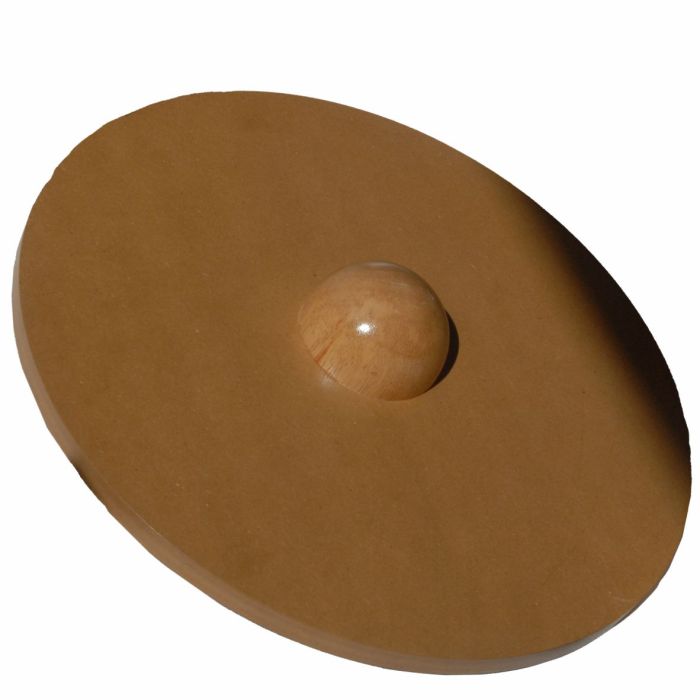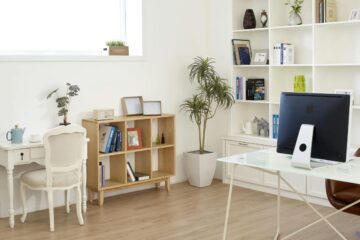Rehabilitation is a crucial part of recovering from an injury, and using a wobble board can significantly enhance this process. These boards are versatile tools that help improve balance, stability, and strength, making them ideal for injury recovery. In this blog, we’ll explore how these rocking boards can aid in rehabilitation and provide a step-by-step guide to using it effectively.
What is a Wobble Board?
A wobble board is a flat, circular platform with a semi-spherical base that allows it to tilt in all directions. It is designed to challenge your balance and stability by creating an unstable surface. These boards come in various sizes and materials, catering to different fitness levels and rehabilitation needs.
These rocking boards are commonly used in physical therapy, fitness training, and injury rehabilitation to enhance proprioception and coordination.
What are the Benefits of Using a Wobble Board for Rehabilitation?
A wobble board can offer numerous benefits for injury recovery:
- Improved Balance and Stability: Regular use of this board helps to enhance your balance and stability, which is crucial for preventing future injuries.
- Enhanced Proprioception and Coordination: These boards improve proprioception, which is your body’s ability to sense its position in space. This is particularly important for recovering from injuries.
- Strengthening of Core and Lower Body Muscles: Exercises on this board engage your core and lower body muscles, helping to build strength and support the injured area.
- Specific Benefits for Different Types of Injuries: Whether you have an ankle, knee, hip, or back injury, this board can be tailored to target the affected area and aid in recovery.
How to Use a Wobble Board for Injury Recovery
Using this board effectively involves a few key steps:
1. Choosing the Right Wobble Board: Select the board that suits your fitness level and rehabilitation needs. Beginners may prefer a board with a larger base for more stability.
2. Basic Exercises for Beginners: Start with simple exercises like standing on the board with both feet and gently shifting your weight from side to side.
3. Advanced Exercises for Progressive Rehabilitation: As you gain confidence, progress to more challenging exercises like single-leg stands, squats, and dynamic movements.
4. Safety Tips and Precautions: Always perform exercises in a safe environment, preferably with support nearby. Avoid overexertion and listen to your body to prevent further injury.
Wobble Board Exercises for Different Injuries
- Ankle Injuries: Perform exercises like ankle circles, toe taps, and single-leg stands to improve ankle stability and strength.
- Knee Injuries: Focus on exercises such as squats, lunges, and balance holds to enhance knee support and flexibility.
- Hip Injuries: Engage in hip circles, side leg lifts, and balance exercises to strengthen hip muscles and improve mobility.
- Back Injuries: Incorporate core stabilization exercises like planks, bridges, and gentle twists to support lower back recovery and core stability.
Success Stories and Testimonials
Many individuals have experienced significant improvements in their recovery process by incorporating wobble board exercises. For example, athletes recovering from ankle sprains have reported faster healing and better performance post-recovery.
Physiotherapists also recommend these rocking boards for their effectiveness in enhancing balance and preventing re-injury.
How to Choose the Best Wobble Board
When selecting these boards, consider the following factors:
- Material: Choose a durable material that provides a good grip.
- Size: Ensure the board is appropriately sized for your height and weight.
- Stability: Beginners may prefer a more stable board, while advanced users might opt for a more challenging one.
Who We Are?
We at Bodyasssist are well-known for providing high-quality products and resources to support your health and wellness journey. Bodyassist quality wobble boards are designed to cater to all fitness levels, helping you achieve better balance, stability, and strength.
Visit our official website to explore our full range of rehabilitation tools and find the perfect wobble board for your needs. Our expert team is here to guide you through your recovery process and ensure you get the most out of your rehabilitation exercises.
Closing Notes
Incorporating a wobble board into your rehabilitation routine can significantly speed up your recovery process. By improving balance, stability, and strength, these rocking boards can help you regain your mobility and prevent future injuries.
FAQS
1. What does a wobble board do for you?
Ans. A wobble board improves balance, stability, and core strength by creating an unstable surface that engages various muscle groups. It enhances proprioception, coordination, and can aid in injury rehabilitation.
2. What is the difference between a wobble board and a balance board?
Ans. A wobble board is a type of balance board with a round shape and a spherical fulcrum, allowing multi-directional movement. Balance boards can be rectangular or curved, typically moving side-to-side or front-to-back.
3. How long should you stay on a wobble board?
Ans. Start with 30-second to 1-minute intervals and gradually increase as your balance improves. You can aim for over 2 minutes without the edges touching the floor for optimal benefits.
4. Are wobble boards good for kids?
Ans. Yes, wobble boards are excellent for kids. They help improve balance, coordination, core strength, and posture. They also support creative play and sensory development.
5. Who is the Australian wobble board guy?
Ans. Rolf Harris, an Australian musician and television personality, invented and popularized the wobble board. He used it in his performances, most notably in the song “Tie Me Kangaroo Down, Sport”.


